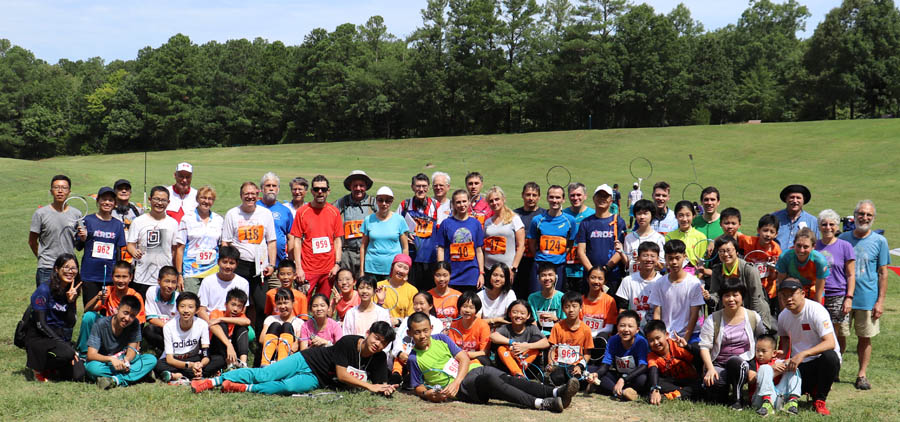
Competitors and volunteers relax after the sprint event at the 2019 USA and IARU Region 2 Championships. (Photo by Charles Scharlau NZØI)

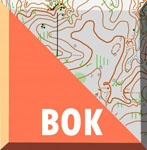 "I am in awe!" That's how Charles Scharlau NZØI summarized the 19th annual Amateur Radio Direction Finding (ARDF) Championships of the USA near Raleigh, North Carolina. He continued, "Eight days of activities provided practices and championships in all events, with some separate youth courses. The banquet food was delicious and plentiful. Accommodations were comfortable and centrally located. It was a wonderful spectacle and I am happy to have been there."
"I am in awe!" That's how Charles Scharlau NZØI summarized the 19th annual Amateur Radio Direction Finding (ARDF) Championships of the USA near Raleigh, North Carolina. He continued, "Eight days of activities provided practices and championships in all events, with some separate youth courses. The banquet food was delicious and plentiful. Accommodations were comfortable and centrally located. It was a wonderful spectacle and I am happy to have been there."
Long-time orienteer and new ham operator Joseph Burkhead KE8MKR was equally enthusiastic: "It was a great event for me and the whole family. The races were definitely of championship caliber. Umstead Park presented excellent, runnable woods, lots of reflections on two meters and even some shadows from the terrain, as well as blissful orienteering decision points.
KE8MKR added, "The organizers were very accommodating to our family so we could all participate, including our children. The Web site was great for bulletins and prompt posting of results. There was loaner RDF equipment available, which was hugely helpful to beginners such as my wife. The registration process was excellent and it was great to have an updated list of who was coming. And the events were executed smoothly with only a few minor hiccups -- as good as anyone should expect. They even made sure that it only rained after the runs were done!"
These praiseworthy organizers were led by the husband-wife team of Joseph Huberman K5JGH and Ruth Bromer WB4QZG. Those two have honed their organizing skills by being long-time leaders of the Backwoods Orienteering Klub (BOK). Joseph designed the foxoring course, Ruth designed the sprint course and they worked together to design the special youth classic courses.
Designing the adult classic courses was Nadia Scharlau. All three have been on ARDF Team USA to the world championships. In 2006, Nadia was the first USA competitor to win a world championship medal.
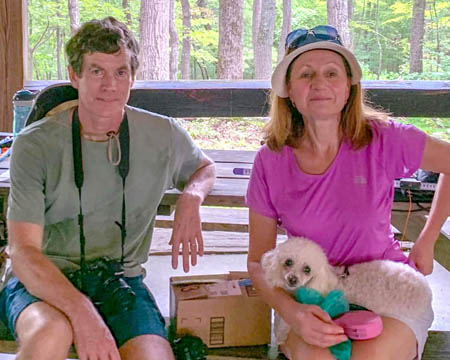
For the third time, a group of about four dozen middle- and high-school students and their coaches came from Guangzhou No. 2 High School in China. Because of the large number of young persons taking part in these championships, awards were presented in additional IARU categories for youth (M10, M12, M14, M16, W12 and W14). Special classic courses were set out just for the youth of China and the USA. Other adult visitors came from Australia and Germany.


Beating the Heat and Insects
North Carolina woods are hot, humid and buggy in the summer. Previous national Championships in the Tar Heel state had been in cooler months of April and October. But this time, it would be a week of daytime highs ranging from 87 to 93 degrees. Fortunately, the forest canopy provided plenty of shade.
To avoid dehydration, the organizers required everyone to bring water onto the courses. Disposable bottles and cups were prohibited for environmental reasons, so all were urged to carry a backpack or belt pack with a hose for drinking on the run. Water was available at the start and end of each course. Vitalyte, an electrolyte drink, was on tap in the finish area.
Snakes and other dangerous critters were not a big problem on the courses, but ticks were another matter. Participants and observers were encouraged to perform full-body checks each evening. It wasn't uncommon for one to find a dozen ticks under clothing after a long day.
The event schedule began on Sunday, July 28 with the first of four days of practice sessions. They gave participants the opportunity to check their equipment and to get accustomed to the local weather and vegetation. The organizers were able to check transmitters and scoring computers and to work out procedural bugs. Sunday's foxoring practice utilized almost the entire Schenck Forest map.
Monday's practice was at Umstead State Park. The adults took on a mid-length course on two meters, while the youth tried their luck on a shorter course on 80 meters. On Tuesday, the roles reversed, with the adults hunting on 80 meters and the youth on two meters.
Wednesday was a sprint practice at Pullen Park. Sprint is a shorter and faster version of classic ARDF, with two sets of five radio foxes, each transmitting for 12 seconds in a one-minute cycle. The two sets are on separate 80-meter frequencies with a spectator control in between, where onlookers can watch the sprinters in action.
The official championships began on Thursday with a challenging foxoring course by K5JGH at Eno River State Park. He placed 14 QRP transmitters, each designated with a circle on the map. None could be heard at the start. Competitors were required to use orienteering to get to the map circles, where they could hear the transmitter and then use their direction-finding gear to find it. Each age/gender category had a list of required transmitters find, with M12 and W12 having four on their list and M21 needing to find all 14. Best in that M21 category was Eduard Nasybulin of California, finding them in 1:14:37.
Joseph Burkhead really liked this course. "Too often the orienteering challenge in foxoring events is far too easy," he wrote. "But this time it required advanced-level orienteering skills, as a championship fox-O should."
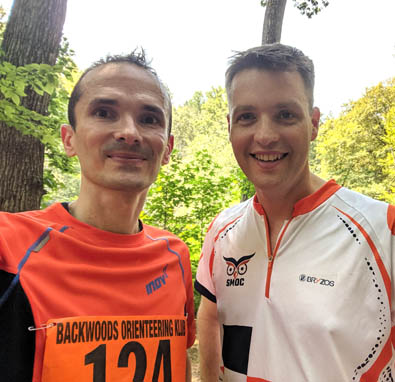
Thuderstorms rolled over the area Thursday afternoon, fortunately after the foxoring was completed. The weather cleared for Friday and the sprint championship at Bond Park in the city of Cary.
"In the sprint," says Imre Polik KX4SO, "quick thinking generally beats fast running." KE8MKR agreed and added, "This sprint was in a perfect venue with a nice mix of park and forest settings, some challenging route choices, and even a great spectator arena!"
Run For the Medals
Saturday, August 3 was the first classic ARDF event at Umstead Park, with a full course for the adults on two meters and a shorter course for youth on 80 meters. The adult course was more challenging than expected, with many competitors not finding all required transmitters and a few going over the 2-1/2 hour time limit.
After the Saturday night banquet and a good night's rest, everyone was back at a different part of Umstead Park for the second classic event, with the adults on 80 meters and youth on two meters. The adult starting point was far enough away that a bus was provided to take the competitors there. Then the course took them back to the gathering area.
The annual USA ARDF Championships play an important role in filling the roster of ARDF Tam USA for the World Championships, which take place in even-numbered years. The next will be in Slovenia during September 2020. Each nation may field up to three competitors in each of the age/gender categories. Rules state that to be on a nation's team, one must be a citizen of that nation or have resided there legally for at least one year.
Taking first place awards among the USA-eligible competitors, in alphabetical order, were Dick Arnett WB4SUV (M70 80m), Natalia Bondarenco (W35 foxor, sprint, 80m), Ruth Bromer WB4QZG (W60 80m), Joseph Burkhead KE8MKR (M40 2m), Thomas Chen (M19 80m), Marcus Enochs (M12 foxor), Robert Frey WA6EZV (M70 foxor, sprint, 2m), Marji Garrett KJ4ZKC (W60 2m), Jennifer Harker W5JEN (W35, 2m), Cameron Haynes (M19 2m), Lori Huberman (W21 foxor, sprint, 2m, 80m), Mike Minium (M50 foxor), Scott Moore KF6IKO (M60 sprint), Eduard Nasybulin (M21 foxor, sprint, 2m, 80m), Imre Polik (M40 foxor, sprint, 80m), Tobias Reed (M14 foxor, sprint, 80m, 2m), Adalia Schafrath-Craig (W12 foxor), Evghenii Vorsin (M50 sprint, 2m, 80m) and William Wright WB6CMD (M60 foxor, 2m, 80m).
In addition to the large group of young radio-orienteers from China, there were more stateside youth competing than at any previous USA championships. The youngest was James Harker, son of Kenneth and Jennifer Harker, WM5R and W5JEN. He earned a gold medal by completing the 80-meter course in a special M10 category.
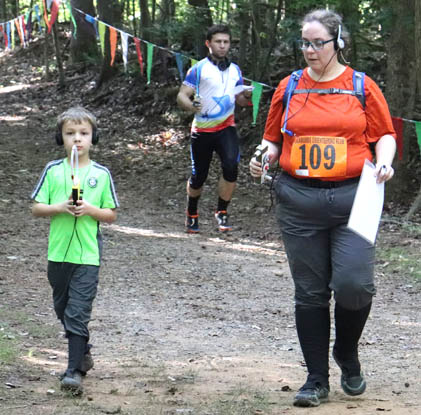
Kelly Sears KN4PAE, a volunteer at the championships, was particularly proud of one of the youth. Kelly teaches eighth grade science at Smith Middle School in Chapel Hill. She and her husband Patrick AK4JE have formed an ARDF club and organized numerous foxhunting sessions in the past four years.
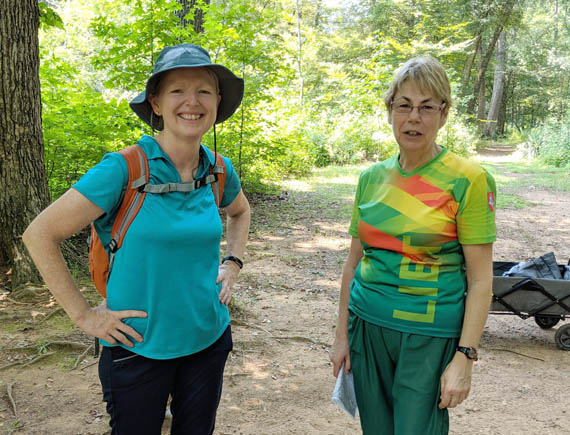
Patrick built 80-meter transmitters and obtained receiver-antenna sets for the students. He prefers 80m ARDF over 2m ARDF because equipment is smaller and easier for middle school students to carry and use. What's more, the lack of signal reflections that can cause problems on two meters makes 80 meters a simpler band for students to learn the sport.
"Tobias Reed is a student who has been actively involved in the Chapel Hill Public Schools ARDF Club for the last three years," Kelly wrote. "He participated the entire week of the championships in the M14 class. Each day you could see Toby and Ewen Templeton VK3OW (M70 competitor from Australia) review their runs and discuss course choices, sharing their pitfalls and triumphs. Toby's perseverance and skills helped him rank in the top 5 of each ARDF competition and he grabbed a second place overall finish with an eight second lead in the sprint."
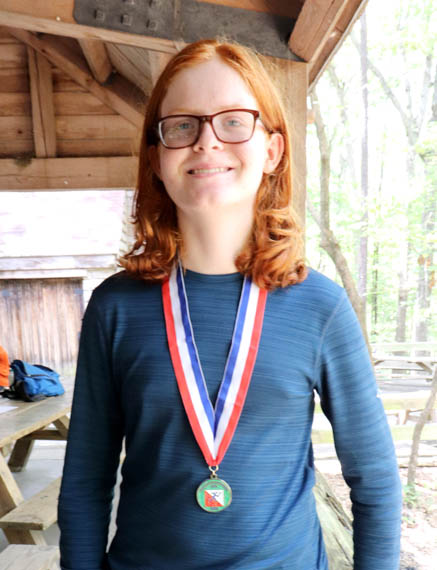
Details of the championships can be found in the information bulletins from the organizers. Links to the bulletins are in the event page of the BOK Web site.
Here are links to the official results.
Foxoring practice, Sunday, July 28
2m classic (adult) and 80m classic (youth) practice, Monday, July 29
80m classic (adult) and 2m classic (youth) practice, Tuesday, July 30
Sprint practice, Wednesday, July 31
Foxoring championship, Thursday, August 1
Sprint championship, Friday, August 2
2m classic (adult) and 80m classic (youth) championship, Saturday, August 3
80m classic (adult) and 2m classic (youth) championship, Sunday, August 4
Here are links to some pages of photos and movies.
Charles Scharlau NZØI on several days
Imre Polik KX4SO on Sunday, July 28
Imre Polik KX4SO on Thursday, August 1
Imre Polik KX4SO on Friday, August 2
Portions of this report have been excerpted from my Homing In column in the December 2019 issue of CQ Amateur Radio magazine.
Joe Moell KØOV

Text and photos copyright © 2019 Joseph D. Moell. All rights reserved.
 Go to Championships Foxhunting News -- Recent and upcoming ARDF championships events
Go to Championships Foxhunting News -- Recent and upcoming ARDF championships events
Go to International-Style Foxhunting Comes To The Americas -- How we're getting the ball rolling
Go to Equipment Ideas for Radio-Orienteering -- Simple and inexpensive receiving and transmitting solutions
Go to Radio-Orienteering News for Southern California -- Results and stories of recent radio-orienteering events in southern California, plus announcements of upcoming ones.
Go to Foxhunting for Scouts -- Let's get the kids involved
 Back to the Homing In home page
Back to the Homing In home page
This page updated 19 January 2020